Приложение
How to install the app on iOS
Follow along with the video below to see how to install our site as a web app on your home screen.
Примечание: This feature may not be available in some browsers.
Вы используете устаревший браузер. Этот и другие сайты могут отображаться в нём некорректно.
Вам необходимо обновить браузер или попробовать использовать другой.
Вам необходимо обновить браузер или попробовать использовать другой.
Королевский Флот (Великобритания)
- Автор темы Thomas Moore
- Дата начала
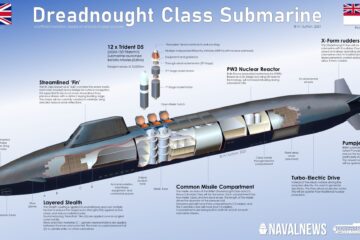
News
First Submarine To Use New Stealth Technology
03 Nov 2021
The adage that stealth is a submarine’s main defense is true today and tomorrow. Speed, ...
Британский флот возглавил адмирал Бенджамин Ки
9 ноября 2021
Должность Первого морского лорда (начальник штаба Королевского военно-морского флота Великобритании) принял адмирал Бенджамин Ки. На этом посту он сменил адмирала Тони Радакина, командовавшего британским флотом с июня 2019 года, а теперь занявшего высший офицерский пост – главы Штаба обороны Великобритании. Как сообщает USNI News, торжественная церемония вступления Бенджамина Ки в должность состоялась на борту исторического корабля "Виктори", который стоит на вечной стоянке в Портсмуте. Это 104-пушечный линейный корабль первого ранга, построенный во второй половине XVIII века; участвовал во многих морских сражениях, в том числе и в Трафальгарской битве, во время которой на его борту получил смертельное ранение адмирал Нельсон.
Адмирал Бен Ки, Великобритания
USNI News
В пресс-службе Минобороны Великобритании уточнили, что в свой первый день на новом посту адмирал Ки провел совещание с начальником штаба ВМС США адмиралом Майком Гилдеем, чтобы "подтвердить особые отношения между флотами двух стран и обсудить области для дальнейшего сотрудничества".
"Занимая до недавних пор должность начальника совместных операций, я видел, насколько тесно мы работаем по всему миру с нашими американскими союзниками", – отметил адмирал Ки, напомнив, что, в частности, эсминец США "Салливанс" включили в состав авианосной ударной группы во главе с флагманом британского флота "Куин Элизабет" во время развертывания в Тихом океане.
По данным военного ведомства, при командовании адмирала Ки британский флот должен получить первые фрегаты двух новых проектов – классов "Тип-26" ("Глазго") и "Тип-31 ("Венчурер").
Кадровый офицер надводного флота, Ки командовал тральщиком "Сэндаун", фрегатами "Айрон Дьюк" (2000) и "Ланкастер" (2001), авианосцем "Илластриус" (2009).
С англ. "Появляются доказательства того, что F35B в восточной части Средиземного моря перехватили российские «МиГи» и «Сухой» на приличных расстояниях и смогли подлететь в пределы видимости до того, как были обнаружены. Так что в действительности российские самолеты были бы уничтожены ракетами класса "воздух-воздух".
Россия не любит этого признавать." Итальянцы с "Кавур" сели на QE заправились и ушли домой.
Россия не любит этого признавать." Итальянцы с "Кавур" сели на QE заправились и ушли домой.

Wednesday, November 24, 2021
U.S. Navy Sending Salvage Ship, Crew To Help Recover Crashed British F-35B

News
Royal Navy Aircraft Carrier Returns Home After Completing CSG21
10 Dec 2021
HMS Queen Elizabeth returned home to Portsmouth 9 December after her maiden operational deployment which took the nation’s flagship to the Indo-Pacific and back.
On a landmark seven-month mission – the most significant peacetime deployment by the Royal Navy in a generation – the aircraft carrier and her task group of eight supporting ships, a submarine, five air squadrons and more than 3,700 personnel visited more than 40 countries.
Her F-35B stealth jets flew more than 4,000 hours – more than 23 weeks in the skies, including combat sorties bombing remaining elements of Daesh – while the ship worked with allied and partner nations forging new ties, renewing old friendships and flying the flag for Britain.
Sailors from the carrier will now be reunited with their families for Christmas after the mission that took the UK Carrier Strike Group 49,000 nautical miles as far east as Japan and Guam and back through the Atlantic, Mediterranean, Suez Canal, the Indian Ocean and to the Pacific.
Queen Elizabeth returned after some of her escort warships, which formed a protective ring around the aircraft carrier during her operations.
Type 45 destroyers HMS Defender and HMS Diamond sailed into Portsmouth this morning while HMS Richmond sailed back to Devonport earlier today.
Families gathered in Portsmouth to greet their loved ones – some of whom return from their first deployment and others who are putting the seal on the latest milestones in their naval careers.
Able Seaman Thomas Corby, who completes his first ever deployment, said: “The thing that I am most looking forward to when I get home is being able to hug my grandparents again for the first time in nearly two years owing to Covid and the deployment.”
For Flight Deck Officer Lieutenant Commander Richard Turrell, the return marks the end of his last deployment at sea.
“I look back on over ten years spent at sea operating carrier flight decks all over the world,” he said.
“This is my final deployment at sea and I have completed my career on board the UK’s flagship carrier as the Flight Deck Officer, responsible for four acres of sovereign territory and an air wing of 28 aircraft.
“This has been personally and professionally rewarding and I will look back over the past two and a half years with immense pride at what the flight deck party have achieved, taking a ship from first of class flying trials, through Operational Sea Training to a deployment across the globe on Operation Fortis.”
HMS Queen Elizabeth returns from her seven month global mission
The aircraft carrier and her strike group sailed a combined 500,000 nautical miles and strengthened bonds with allies, including Australia, Canada, New Zealand, France, Greece, Israel, India, Italy, Japan, Oman and the Republic of Korea.
The task group was also a notable international effort, with Dutch frigate Evertsen and US Navy destroyer USS The Sullivans sailing side by side with seven British ships on the deployment.
US Marine Corps jets were also deployed alongside the RAF’s 617 Squadron on board HMS Queen Elizabeth, assembling the largest contingent of fifth-generation stealth jets ever seen at sea.
HMS Queen Elizabeth’s Commanding Officer Captain Ian Feasey said: “This seven-month deployment has proven a resurgent Carrier Strike capability for UK Defence.
“It would not have been possible without the professionalism, determination and self-sacrifice of the 1500 sailors, airmen and marines who have worked tirelessly to deliver all that was asked of them.
“The safe return and operational successes of HMS Queen Elizabeth are testament to their commitment and energy. They have turned a Royal Navy aircraft carrier into a national flagship, and it has been a privilege to be their Commanding Officer.”
During more than seven months away, sailors consumed an impressive 25.5 tonnes of sausages, 2.1 million eggs, 190,000 potatoes (equivalent weight of 15 London buses), 22,700kg of Angel Delight, 1.2 million rashers of bacons and 355,200 pints of milk.
On top of that, 40 tonnes of mail was delivered to those on board.
Британский флагман вернулся из первого дальнего похода
Флагманский корабль Королевского военно-морского флота Великобритании – авианосец "Куин Элизабет" – вернулся в Портсмут после своего первого оперативного развертывания, которое включало поход в Индо-Тихоокеанский регион. Об этом в пятницу, 10 декабря, сообщает Naval Today.
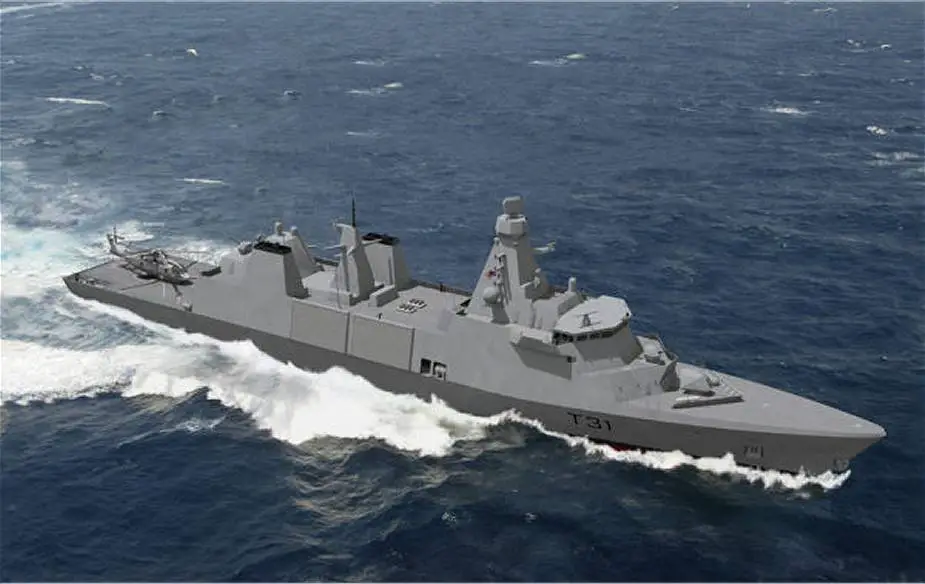
British Navy plans to introduce five Type 32 frigates
British Royal Navy is planning to introduce five Type 32 frigates, which would increase the escort fleet (frigates and destroyers) from 19 to 24.
According to a report published by the UK’s House of Commons Defense Committee on December 7, 2021, the British Royal Navy is planning to introduce five Type 32 frigates, which would increase the escort fleet (frigates and destroyers) from 19 to 24.
Follow Navy Recognition on Google News at this link

The Type 32 is a frigate currently in development in the United Kingdom for the Royal Navy. Admiral Radakin described the British Navy’s current thinking on the project, confirming that the vessel will be a general-purpose frigate whose purpose would be to increase the overall number of vessels in the fleet, rather than fill a specific capability gap.
In November 2020, British Prime Minister Boris Johnson announced the first outcome of the defence review by pledging increased funding in the range of £16.5 billion over four years to stabilise the defense budget and to provide new funding for space, cyber and research activities. A plan to construct a new class of frigate, the Type 32 frigate, was also announced with five vessels envisaged and likely entering service starting in the early 2030s.
In March 2021, the British government's defense command paper, Defense in a Competitive Age, elaborated further on the Type 32 frigate stating that it would be designed to protect territorial waters, to provide persistent presence and to support the Royal Navy's new Littoral Response Groups (LRGs).
uring the DSEI, British defense exhibition in September 2021, British company Babcock International revealed it was pitching its Arrowhead 140 design, used by the Type 31 frigate, as the base design for the Type 32.
According to information from the UK’s Minister for Defense Procurement Jeremy Quin, the new Type 32 frigate will be a platform for autonomous systems, adding to the British Navy’s capabilities for missions such as anti-submarine warfare and mine countermeasures.
Citing British navy military experts, the Type 32 will offer an ability to host MMCM modules in addition to supporting littoral operations by the Royal Marines. Initiated in 2012 under a cooperation agreement between France and the United Kingdom, the MMCM program develops a prototype autonomous system for detection and neutralization of sea mines and underwater improvised explosive devices (UWIEDs).
The MMCM contract includes three stages, starting with a first phase for design. The next stages, which are subject to contract options, will manufacture and experiment the future mine countermeasures capabilities of both France (SLAM-F future mine countermeasures system) and the United Kingdom (MHC – Mine countermeasures and Hydrography Capability). The program will deliver an autonomous, remotely operated mine countermeasures solution.
Их всего 21+3 в штатах. Их мало даже на "королеву", пишут, такие темпы закупок и подготовки. Предположения, что в Рота подсядут американцы.
Если бы подсели, это бы объявили. Будут гонять порожняком, как корабль управления

News
HMS Prince of Wales assumes flagship role of NATO Maritime High Readiness Force
12 Jan 2022
The Royal Navy's newest aircraft carrier, HMS Prince of Wales, assumed the command of the NATO Response Force in Portsmouth Naval Base on Tuesday, January 11.

News
UK’s Final Poseidon MRA Mk1 MPA delivered to Royal Air Force
14 Jan 2022
The ninth and final Poseidon maritime patrol aircraft – ZP809 – has been delivered to RAF Lossiemouth in Scotland.
Read More

News
3rd and final Ammunition loading jetty for Royal Navy carriers completed
14 Jan 2022
The third and final jetty at Glen Mallan on the shores of Loch Long in Scotland to support the Royal Navy’s aircraft carriers has been handed over to its operators.
Read More
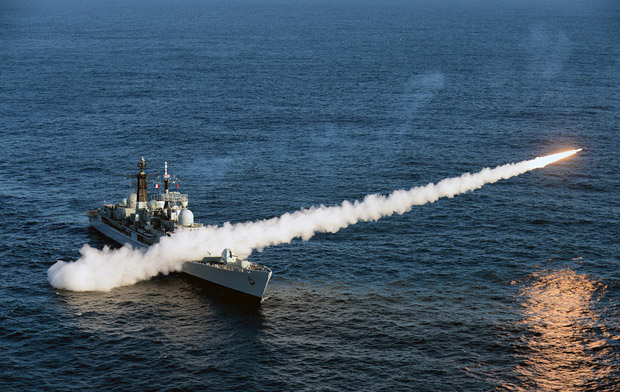
UK plans to introduce its new class of destroyers in 2030s
New Royal Navy's Type 83 destroyers are scheduled to replace the existing Type 45 destroyers in the late 2030s, according to the UK's officials.
The Defence Command Paper entitled “Defence in a Competitive Age” published last year revealed that the UK Government plans to develop a new class of destroyers, Type 83 destroyers. The concept phase for the vessels is scheduled to start early this year.
A report published by the UK’s House of Commons Defence Committee gives another information about the Type 83 destroyers. According to the report, the vessels might act as motherships for the new system of sensors and autonomous vessels. Instead of a like-for-like replacement of Type 45 with Type 83 destroyers to perform an air defence function, their roles could in future change and expand.
The number of destroyers, as well as other relevant details, have not yet been disclosed. The UK Government’s vision for 2030 is to boost its shipbuilding capacities, driving the sector to be globally competitive in several market segments, including the design, build, integration, test and evaluation and repair of naval vessels.
The new strategic and long-term investments are expected to increase the capability of the Royal Navy’s surface fleet and allow the development of, among other things, a new class of destroyers.
Trade association for the UK’s defense, security, aerospace, and space sectors ADS has earlier on called for the navy to engage with industry in new naval projects, particularly on the Type 83 destroyer where design work must begin soon for delivery in the late 2030s.
The existing Type 45 or Daring-class destroyers are primarily designed for anti-aircraft and anti-missile warfare, and they are among the most advanced warships ever built, according to the Royal Navy. They are a total of six vessels in the class. The first ship in the class, HMS Daring, was launched on 1 February 2006 and commissioned on 23 July 2009.
In July last year, the UK’s Ministry of Defense (MoD) announced that the vessels will receive a £500 million upgrade to enhance their firepower capability. MBDA UK has been awarded an 11-year contract to integrate the Common Anti-Air Modular Missile (CAMM) program, often referred to as Sea Ceptor, into the Type 45 destroyers’ Sea Viper weapon systems.
The Type 45 destroyers also come equipped with an array of conventional weaponry, including the BAE Systems’ 4.5-inch Mark 8 Mod 1, two 30mm DSM Mark 2s, two Phalanx 20mm close-in weapons systems, two 7.62mm miniguns, and up to six FN MAG general-purpose machine guns.
This arsenal is designed for a range of purposes, from repelling fast inshore attack craft to destroying short-range missiles in mid-air.
However, the costly upgrades of the Royal Navy’s vessels have sparked controversy, leading UK naval officials to call for abandoning lengthy retrofits. In light of this policy, Royal Navy officer Admiral Tony Radakin announced that by retiring two Type 23 frigates, the navy will save around £100 million ($133 million) to boost the future fleet.
По словам официальных лиц Великобритании, новые эсминцы "Тип-83" заменят существующие эсминцы "Тип-45" в конце 2030-х годов.
Британский Королевский военно-морской флот
Военное обозрение
Подробности о будущих кораблях пока неизвестны, но в документе комитета по обороне Палаты общин говорится, что их должны оснастить новыми системами датчиков и РЛС, а также беспилотными надводными и подводными аппаратами. Также пока неясно, сколько именно эсминцев закажут для британского флота.
Состоящие сегодня на вооружении эсминцы класса "Тип-45" в первую очередь предназначены для противовоздушной и противоракетной обороны. Всего построено шесть таких кораблей. Головной, "Дэринг", спустили на воду в феврале 2006 года и сдали в эксплуатацию в июле 2009 года.
В июле прошлого года Минобороны Великобритании объявило, что эсминцы "Тип-45" пройдут модернизацию для повышения их огневой мощи. В частности, они получат новые зенитные ракетные комплексы "Си Цептор" (Sea Ceptor). По расчетам командования, это обеспечит 50%-е увеличение количества зенитных ракет на борту. Пуск будет осуществляться с использованием 24 дополнительных пусковых ячеек.
Отметим, что сегодня в интересах Королевского военно-морского флота реализуются программы производства восьми фрегатов класса "Тип-26" ("Глазго") и пяти фрегатов "Тип-31" ("Венчурер"). Все корабли этих типов должны ввести в строй до 2029 года.
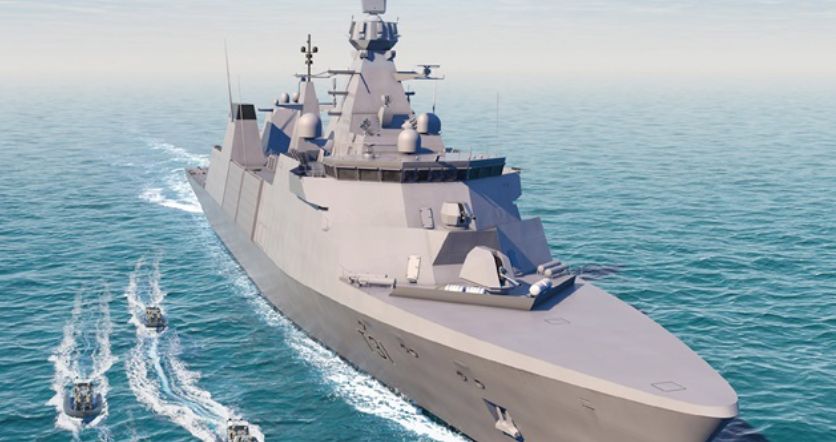
UK plots construction of five Type 32 frigates at Scottish shipyard
The Royal Navy plans to introduce five Type 32 frigates which could be built at a shipyard in Rosyth, Scotland.
According to a report published by the UK’s House of Commons Defence Committee, the UK wants to increase the escort fleet (frigates and destroyers) from 19 to 24 in the next period.
This includes the construction of Type 26, Type 31, and Type 32 frigates. Earlier on, Ben Wallace, the Defence Secretary, stated that Rosyth would be building Type 32 Frigates in addition to Type 31 Frigates.
“We are committed to building the Type 26 in the United Kingdom; it is under construction on the Clyde. In Rosyth, work is ongoing … to build the Type 31s and the subsequent Type 32s… I intend to make sure that, if not entirely, there is a considerable degree of UK build in that process, subject to tender. I have to be cautious about the contract because the competition is to begin soon—very soon,” the UK’s Defence Secretary stated.
The Type 32 frigates will be designed to protect territorial waters and provide a persistent presence overseas while also supporting littoral response groups, according to UK officials.
More details about a new class of frigates emerged in November 2020, with the UK’s Minister for Defence Procurement Jeremy Quin writing that the ships will be a platform for autonomous systems. The announcement came after the UK Government unveiled a massive increase in defence spending. The government pledged to increase funding in the range of £16.5 billion over four years to stabilize the defence budget.
Responding to a written parliamentary question, Quin said: “Further work is required to develop the operational concept however it is envisioned that Type 32 will be a platform for autonomous systems, adding to the Navy’s capabilities for missions such as anti-submarine warfare and mine countermeasures.”
Type 31 frigates, together with Type 26 frigates and fleet solid support ships, are scheduled to enter the Royal Navy’s fleet in 2027 and 2028. UK-based aerospace, defense and security company Babcock International held a steel cutting ceremony for the first Type 31 frigate HMS Venturer in September last year.
UK’s first Type 31 frigate to hit the water next year


The Type 31 frigate program is a step in the UK Government’s plan to increase the number of warships in the Royal Navy over the next 20 years. The Royal Navy has picked Babcock’s Arrowhead 140 proposal as the preferred design for its Type 31 frigates. The fleet of five ships will be built at an average production cost of £250 million per ship.
In May last year, the navy revealed the names selected for the Type 31 frigates. The five frigates will be known as HMS Active, HMS Bulldog, HMS Campbeltown, HMS Formidable, and HMS Venturer.
In September last year, Babcock International officially started the construction of the first vessel, HMS Venturer. The steel cutting ceremony took place in Babcock’s facility in Rosyth, Scotland
Each of the Type 31 frigates will be equipped with the Sea Ceptor air defence missile system, a 57mm main gun and two 40mm Bofors, and a 4D radar. The units will also have capabilities to operate with Merlin or Wildcat helicopters.
Furthermore, they will be able to carry the planned persistent operational delivery systems or PODS, a ‘plug and play box of tricks’ carrying drones, autonomous minehunting equipment, a command center for commando raiders or humanitarian aid.
The Type 31s will replace five general-purpose Type 23 frigates that have served the navy since the early 1990s. The new frigates are scheduled to enter service in 2027.
“These frigates will form the fulcrum of a formidable future force made up of: destroyers, new autonomous mine-hunting capability, new Fleet solid support ships, multi-role ocean surveillance and Bay-class support ships, next-generation nuclear submarines and our two magnificent carriers,” Second Sea Lord Vice Admiral Nick Hine noted.
“Come 2023 when HMS Venturer slips its bonds and enters the water, I have no doubt it will emulate the trailblazing successes of its forebears and write its own glorious chapter in our nation’s famous maritime history.”
UK plans to procure next batch of Type 26 frigates in early 2020s
“Super release” of software updates delivered to UK’s Queen Elizabeth-class aircraft carriers
Поляки тоже склоняются выбрать именно его, правда оригинал, с ударными возможностями Arrowhead 140 (на графике 2019 г.) а не "безоружный" тип 31. Немцы TKMS на днях подробно презентовали польскими журналистам MEKO A-300 на презентации возможностей верфей и промышленной кооперации c Польшей. Англичанин ему в подмётки не годится, но к немцам у поляков обоснованное предубеждение-не союзники мол в суровую годину... https://defence24.pl/przemysl/trzy-...ms-kusi-mozliwosciami-wiedza-i-doswiadczeniem На его основе (как обычно) нам бы фрегат совместо разработать с немцами и заказать хоть пару (с опционом  ) к концу десятилетия, если будет чёткое обоснование, конечно. Опыт SAAR-6 явно на пользу с носа, кормы...
) к концу десятилетия, если будет чёткое обоснование, конечно. Опыт SAAR-6 явно на пользу с носа, кормы... 

 ) к концу десятилетия, если будет чёткое обоснование, конечно. Опыт SAAR-6 явно на пользу с носа, кормы...
) к концу десятилетия, если будет чёткое обоснование, конечно. Опыт SAAR-6 явно на пользу с носа, кормы... 

Последнее редактирование:
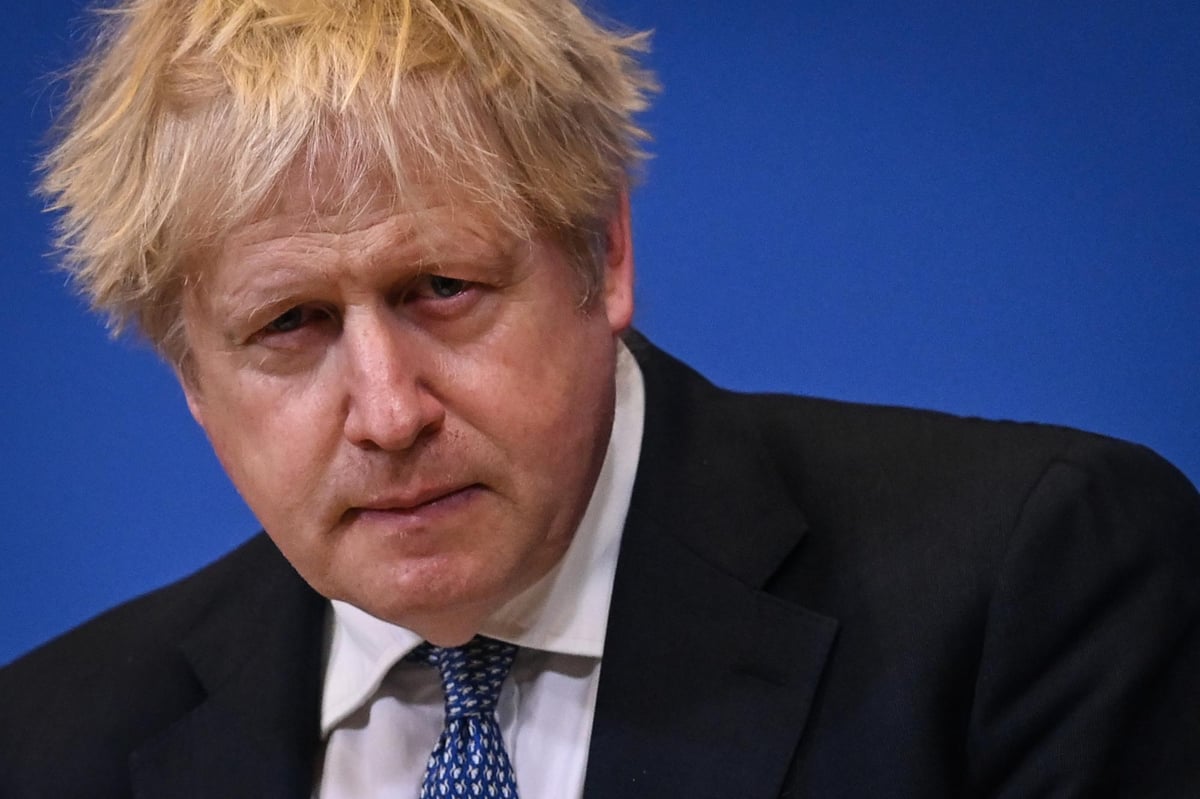
Hundreds of navy sailors from Portsmouth to be deployed amid Ukraine crisis
HUNDREDS of sailors from Portsmouth are set to be deployed to the Mediterranean as Boris Johnson seeks to offer further support to Ukraine in the face of a potential invasion by Russia.




